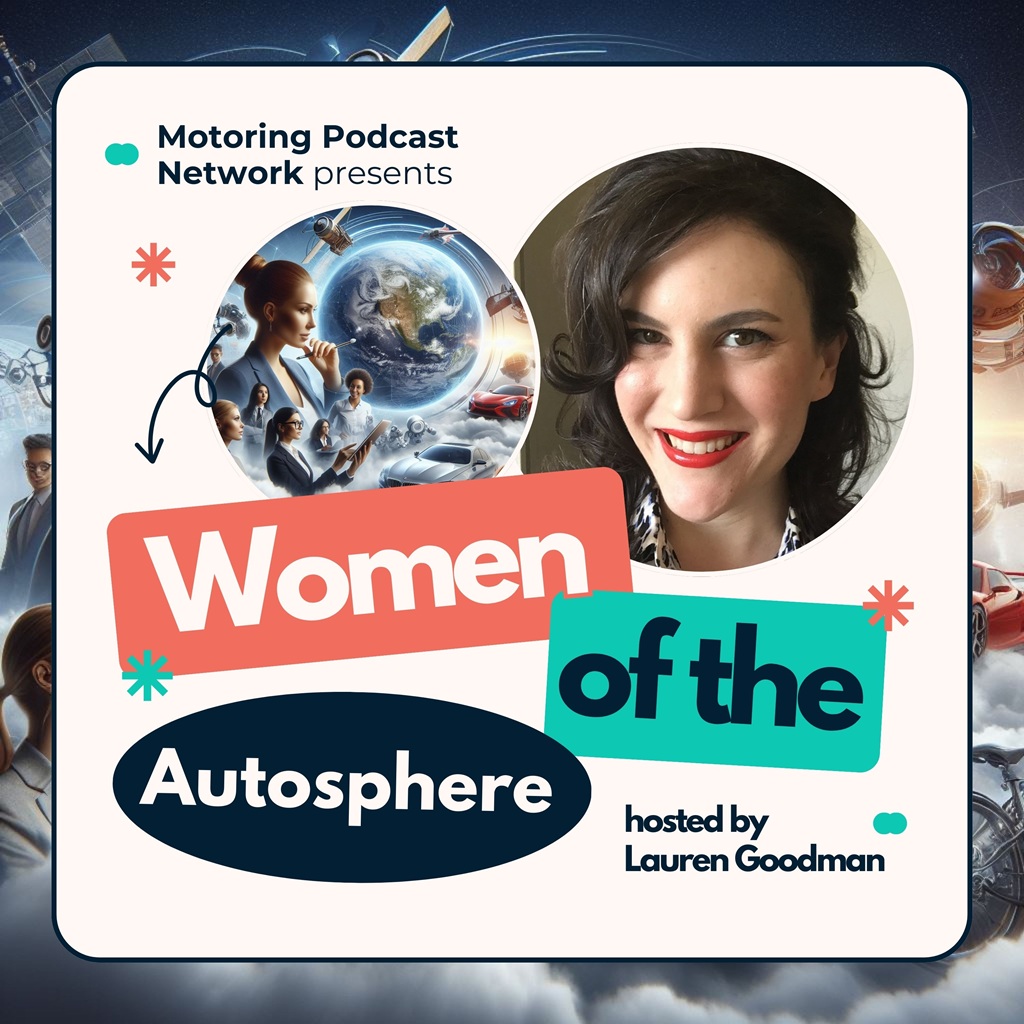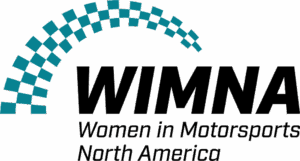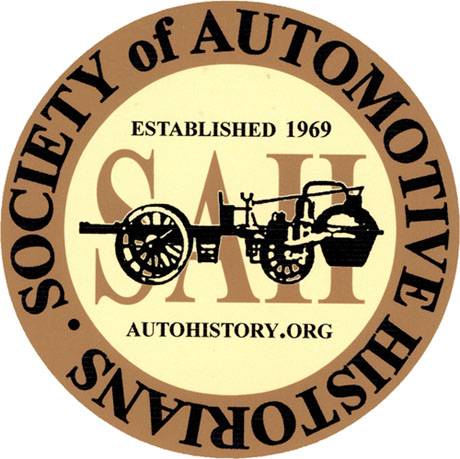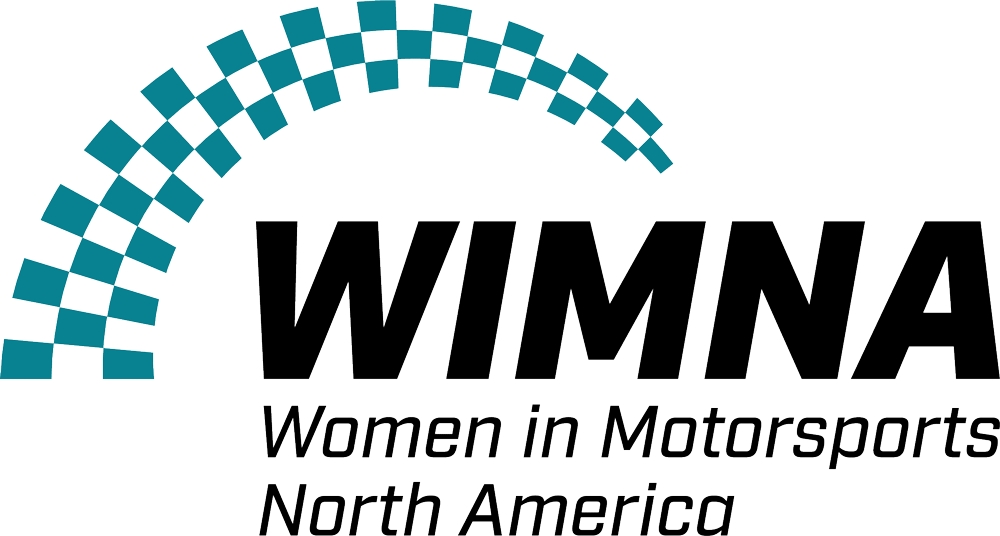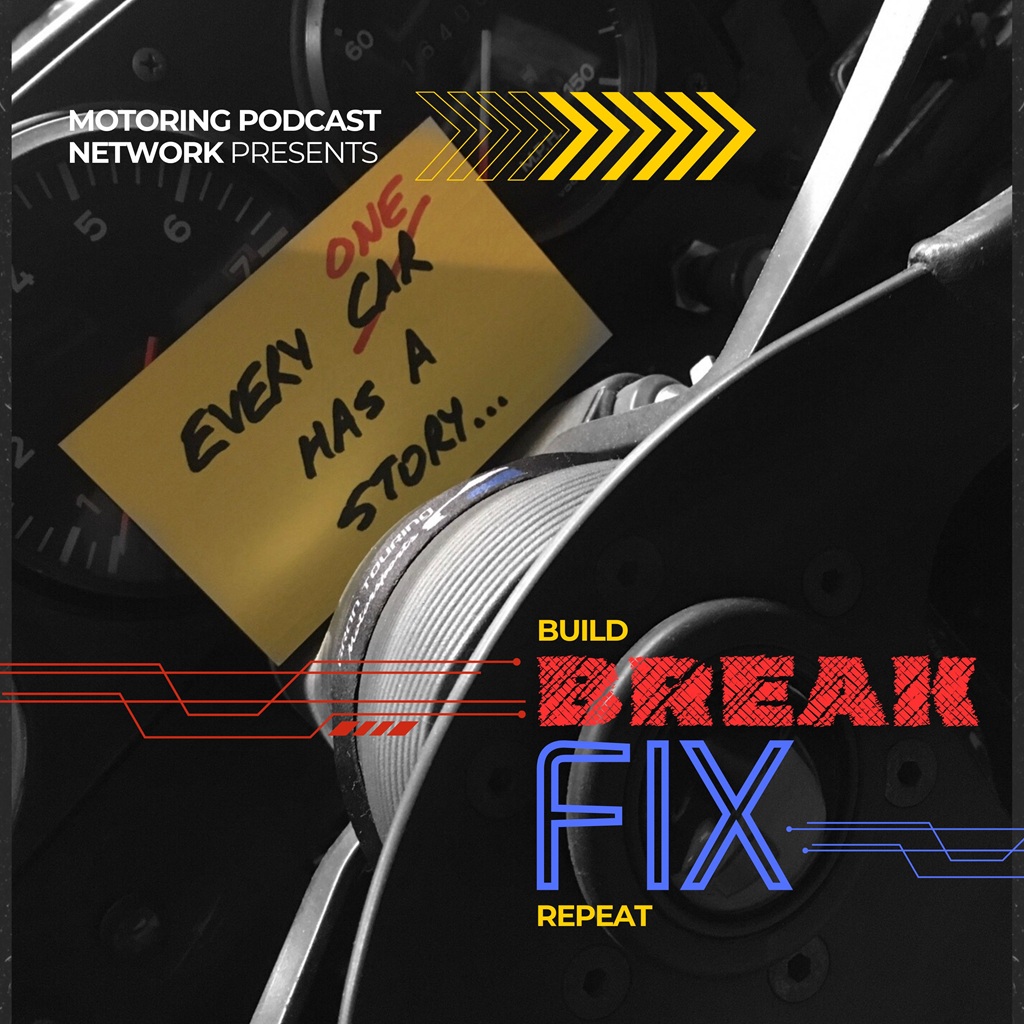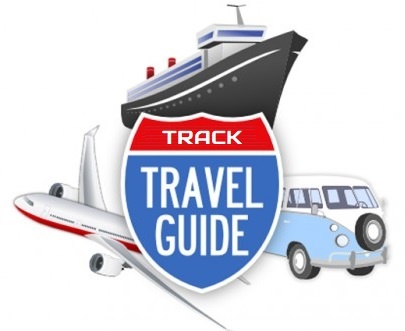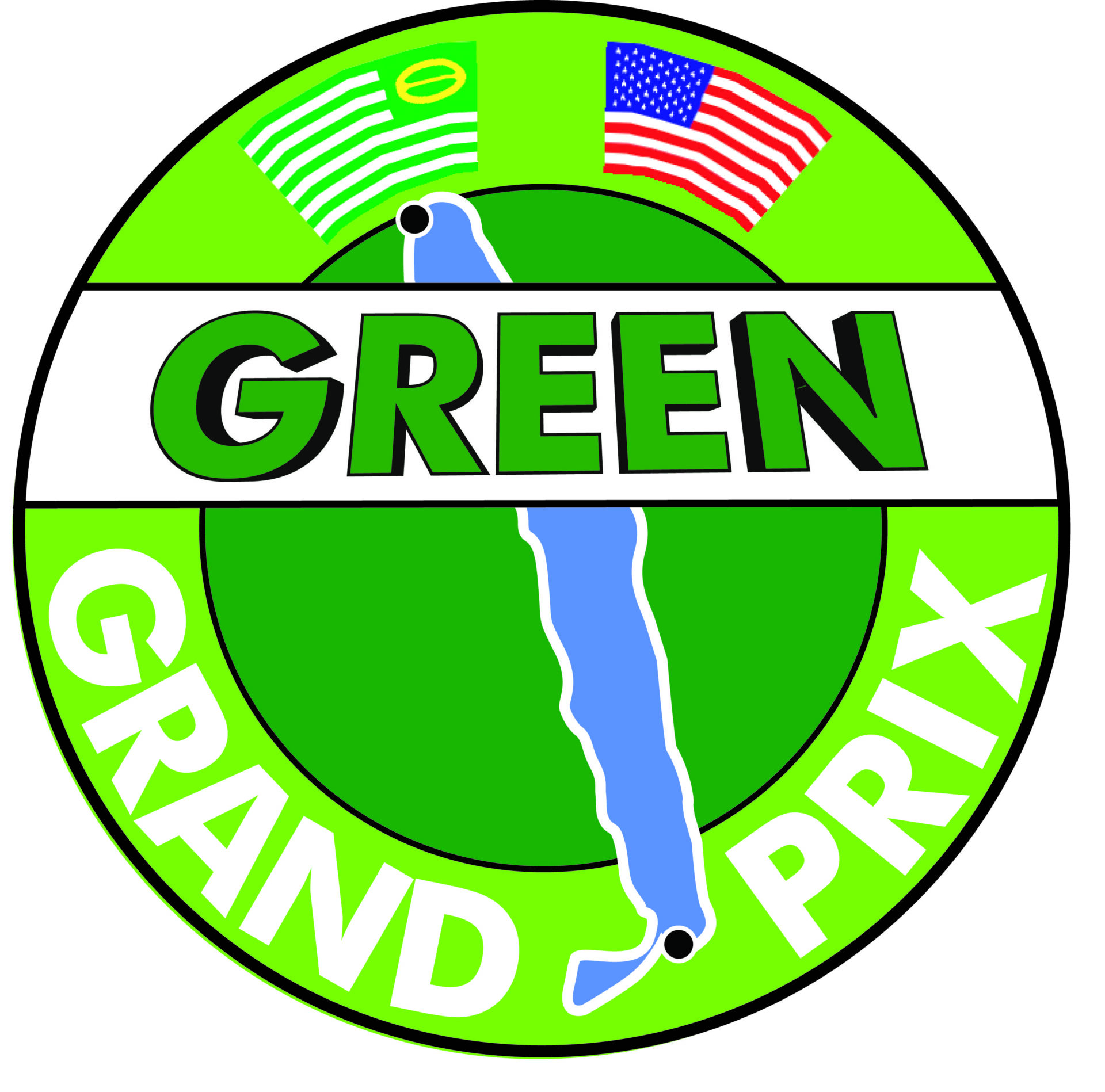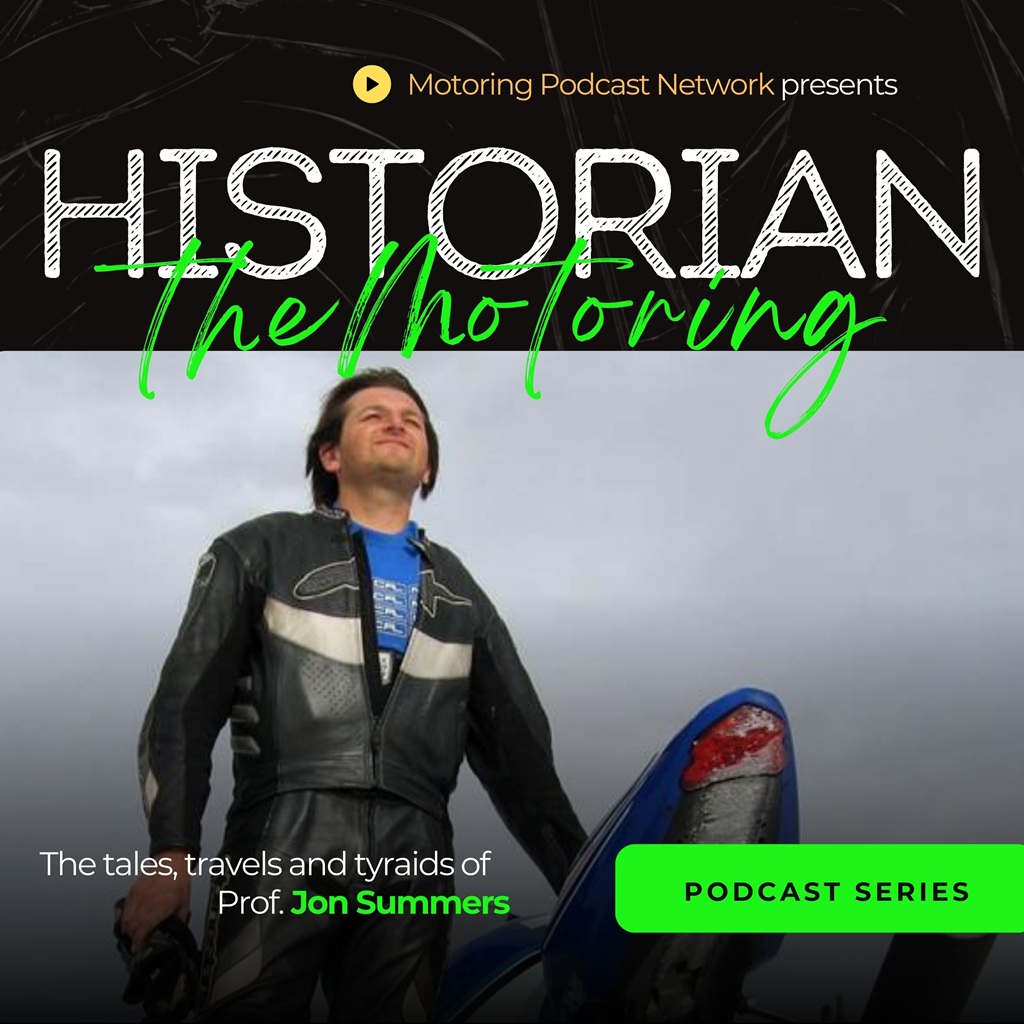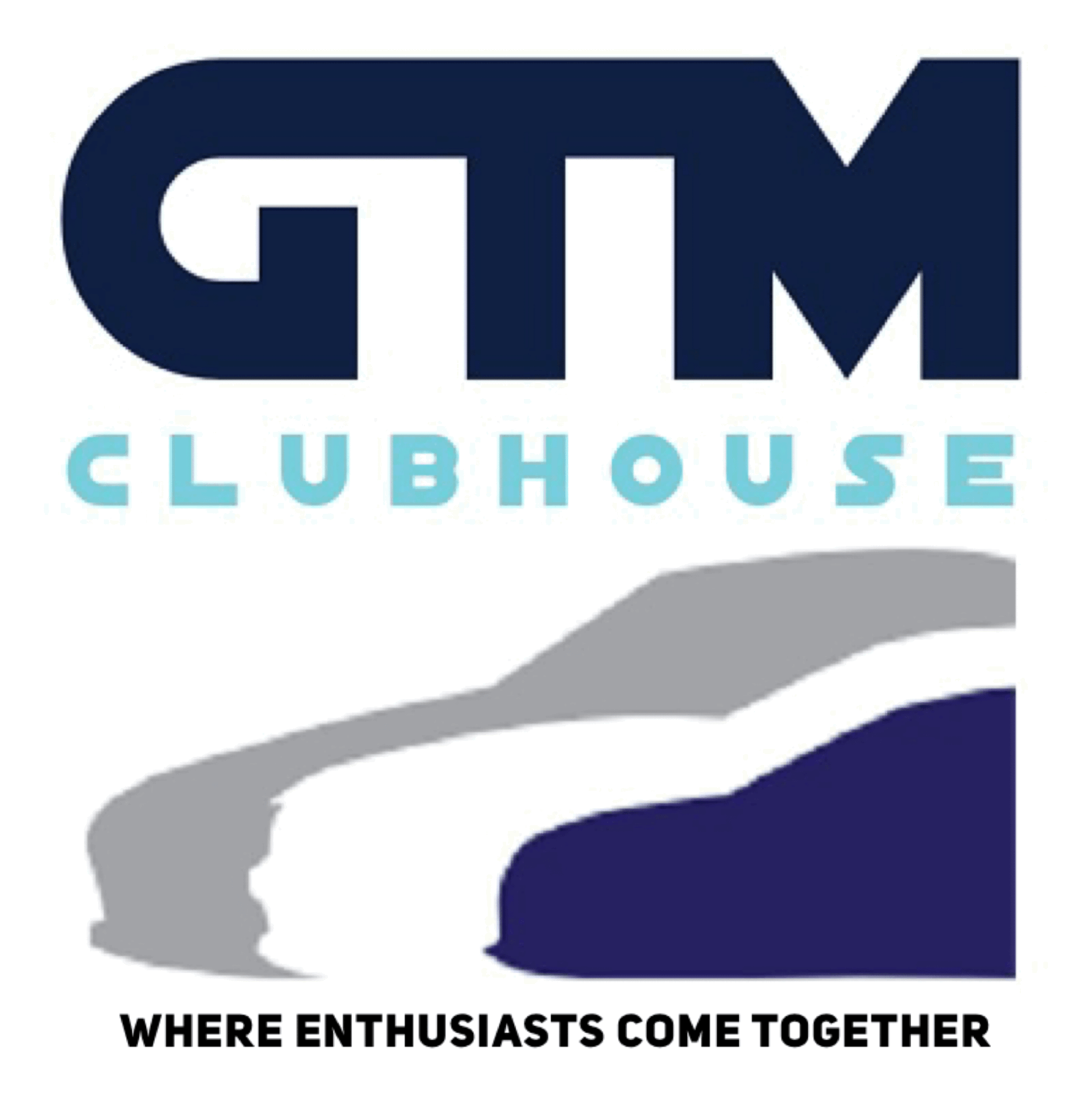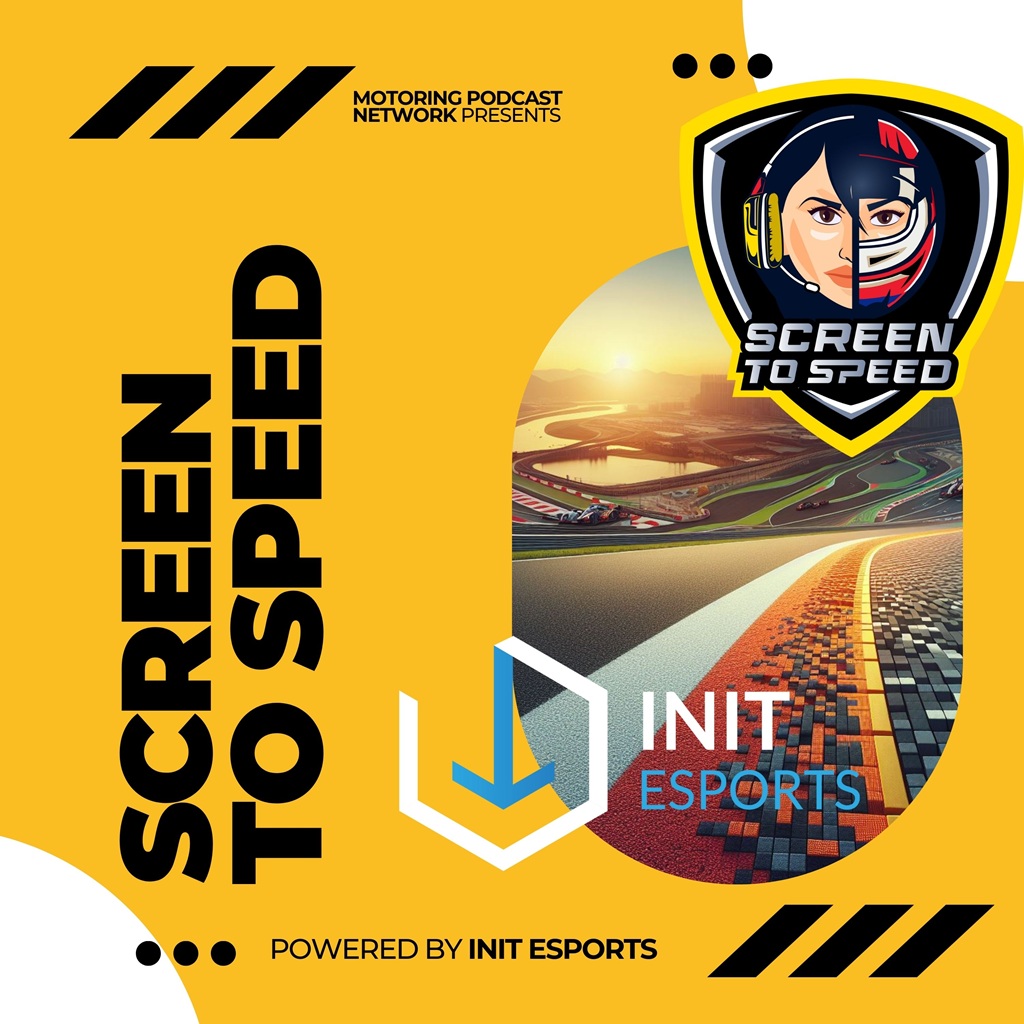It’s International Women’s Month, and we couldn’t think of a better way to honor it than by bringing together three phenomenal female drivers who are tearing up the track and rewriting the rules. From late models to sprint cars, these women have proven that racing isn’t just a man’s game—it’s anyone’s game if you’ve got the grit, the guts, and the drive to win!
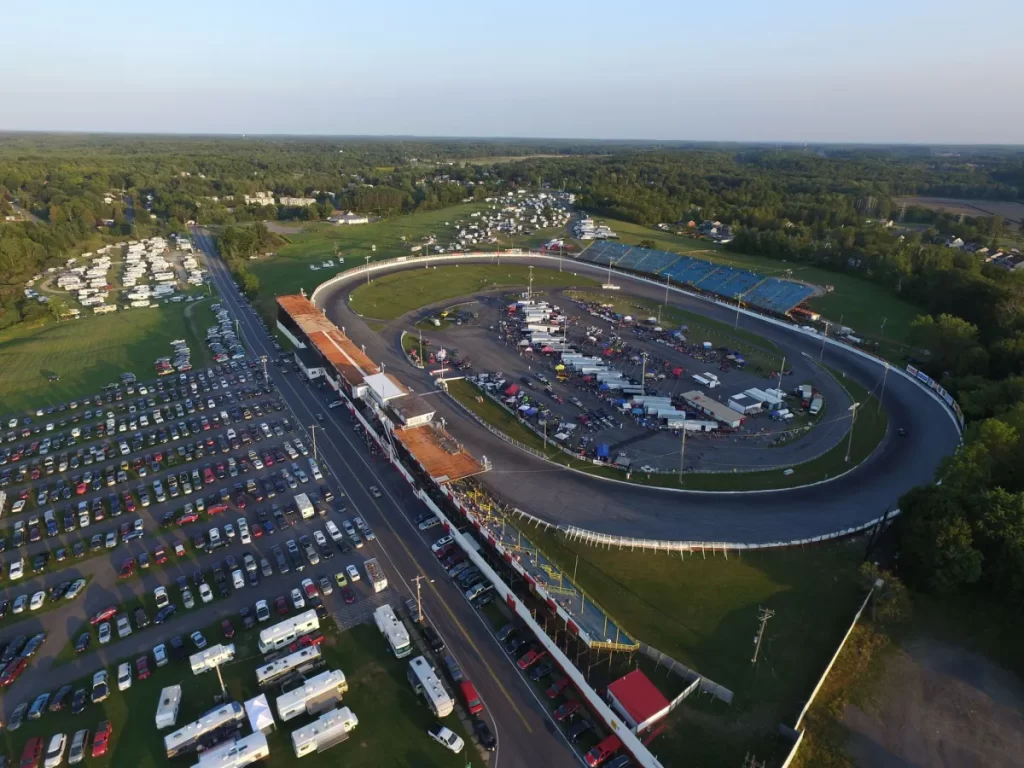
We’ll talk with Erin Evernham, Alison Sload and Taylor Ferns about their journeys, the challenges they’ve faced, and how the sport is evolving for the next generation of female racers.
About our Panelists
Erin (Crocker) Evernham is a highly accomplished short track racer who made history as one of the most successful female drivers in sprint car and stock car racing. She first gained national recognition in the early 2000s by dominating the dirt track scene, earning numerous victories in the World of Outlaws and USAC Sprint Car series. Her talent behind the wheel caught the attention of NASCAR teams, leading to opportunities in the ARCA Menards Series, NASCAR Truck Series, and Xfinity Series.
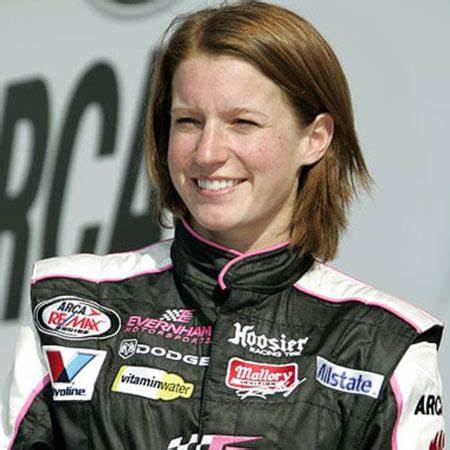
As the first woman to win a World of Outlaws feature race, Erin broke barriers in a male-dominated sport, earning respect for her skill, determination, and competitiveness. She later transitioned into team management alongside her husband, legendary NASCAR crew chief and team owner Ray Evernham, but her impact on racing remains strong. As both a driver and a mentor, Erin Evernham continues to inspire the next generation of racers, proving that talent and perseverance can lead to success at any level of motorsports.
Taylor Ferns has built a reputation as one of the most talented and versatile drivers in short track and open-wheel racing. Hailing from Michigan, she made history at a young age by becoming the youngest female driver to win a USAC Silver Crown race, showcasing her ability to compete at the highest levels of grassroots motorsports. Taylor has excelled in various disciplines, including midget racing, sprint cars, and Silver Crown competition, proving her adaptability on both pavement and dirt.

Beyond her accomplishments on the track, Taylor has been a strong advocate for women in motorsports, demonstrating that talent and determination can break down barriers in a traditionally male-dominated sport. She continues to make waves in short track racing, competing in high-profile events across the country and earning respect from fans and fellow drivers alike. With a passion for racing and a relentless drive for success, Taylor Ferns remains a rising star to watch in the world of motorsports.
Tune in everywhere you stream, download or listen!
 |  |  |
Alison Sload has made a name for herself in the competitive world of short track racing, particularly in the asphalt super-modified scene. Known for her skill, consistency, and determination, Alison made history, becoming the first female to win a super-modified feature race in the 69-year history of Oswego Speedway.

Her success behind the wheel has cemented her reputation as a formidable competitor in the Northeast super-modified racing. With a background in both late models and modifieds, Alison continues to push boundaries in a traditionally male-dominated sport. Her talent and drive make her a standout figure in short track racing, and she remains a driver to watch as she continues to carve out her legacy on the track.
So buckle up, because this conversation is going to be fast, fierce, and full of insight from the best in the business!
Tune in everywhere you stream, download or listen!
 |  |  |
- About this Series
- Show Notes
- Transcript
- Highlights
- Learn More
About this Series
Lauren Goodman is the Supervising Producer of Media and Exhibitions at Revs Institute in Naples, Florida. Widely regarded as one of the top automotive museums in the world, Revs Institute is dedicated to the study of the automobile and offers visitors an exceptional opportunity to view over 100 of the most influential automobiles of our time. After earning her MFA in screenwriting from Florida State University’s College of Motion Picture Arts, Lauren spent the next six years in Hollywood in creative development for film and television, as well as in production for TV and new media advertising. A chance visit to Revs Institute led to volunteering at the museum and researching the history of women in racing.
Show Notes
- Can you each share a little bit about your journey into short track racing? What sparked your passion for the sport?
- For those that came from a racing family – What was it like growing up going to the track? Lots of kids “phase out” and maybe don’t follow in their parents footsteps, what drew you in? What helped you stay committed?
- Motorsports require both mental and physical toughness. How do you prepare yourself for race day, both physically and mentally?
- International Women’s Month is all about celebrating progress and representation. How have you seen opportunities for women in motorsports evolve over the years?
- Let’s talk about the good, the bad and indifferent of racing – What do you think could be done to help more female racers gain sponsorships?
- What advice would you give to young girls who dream of getting behind the wheel but might be hesitant to entering the sport?
and much, much more!
Transcript
Crew Chief Eric: [00:00:00] The following episode is brought to you in part by Women in Motorsports North America, a community of professional women and men devoted to supporting opportunities for women across all disciplines of motorsport by creating an inclusive and resourceful environment to foster mentorship, advocacy, education, and growth, thereby ensuring the continued strength and successful future of our sport.
Lauren Goodman: It’s International Women’s Month, and we couldn’t think of a better way to honor it than by bringing together three phenomenal female drivers who are tearing up the track and rewriting the rules. From late models to sprint cars, these women have proven that racing isn’t just a man’s game. It’s anyone’s game.
If you’ve got the grit, guts, and drive to win, we’ll talk with Aaron Crocker Evernham, Allison Slode, and Taylor Ferns about their journeys, challenges, and how the sport is evolving for the next generation. So buckle up because this conversation is going to be fast, fierce, and full of insight from the best in the [00:01:00] biz.
Crew Chief Eric: And with that, I’m your host, Crew Chief Eric from the Motoring Podcast Network, along with Lauren Goodman from the Revs Institute, welcoming everyone to our Center Conversation. Aaron, Alison Taylor, welcome to the show.
Taylor Ferns: Hello. Hi, thanks for having us. Great to be here.
Crew Chief Eric: There’s always a superhero in origin story.
So let’s briefly talk about how everybody got into short track racing. Can each of you share a little bit about your journey into this discipline of motorsport? What sparked your passion for the sport? Who wants to kick it off? Alison?
Alison Sload: Sure. So I actually started out very young in my career doing gymnastics and dance.
Had nothing to do with motorsports whatsoever. So I watched my younger brother run around the racetrack and quarter midgets at a local track near us. After a year of watching him, I told my dad, you know, this isn’t it. I don’t want to sit in the stands anymore. So he put me in a car and that’s really history.
Pretty simple. I wasn’t too great when I started off. I was very timid, quiet, not very aggressive. So my dad, like three years in [00:02:00] said, I don’t know if this is for us. I don’t think this is going to work. And I don’t know what it was, but a switch kind of went off in my head and I haven’t stopped since. I’ve been racing since I was about seven.
So a little over 25 years.
Crew Chief Eric: Taylor, you’ve got a similar story starting off real young in sprint cars.
Taylor Ferns: Yeah, I started off in quarter midgets at six years old, but I got into that because I come from a racing family. My uncles on my mom’s side, raced late models and ARCA back in the eighties and early nineties.
So before I was ever even around, I just ended up growing up around it. You know, we celebrated Daytona 500s and our family, like it was the Superbowl. When my dad and my uncle discovered quarter midgets, when I was about six, we drove up to nearby Lansing, Michigan, and I sat in the car for the first time.
And just, it was. Love at first sight. Been doing it ever since. It’s definitely my number one passion. I’m completely obsessed with it, and definitely couldn’t imagine my life without it.
Crew Chief Eric: Aaron, how about you?
Erin (Crocker) Evernham: My story actually is very similar. It started in quarter midgets. I’m the youngest of five. I have two older brothers [00:03:00] and two older sisters, and I did everything my brothers did.
I played ice hockey. I played in the dirt, dirt bikes, you name it. So I grew up at the racetrack and I wanted my turn. I had one older sister who had raced and my dad called her a social racer because she wasn’t aggressive and she would let people pass her. So I knew from the get go that I needed to start strong.
So I started at seven years old and that was the beginning of a wonderful career.
Crew Chief Eric: Let’s talk a little bit more about growing up at the track. Like you guys, I grew up around the track too, in the road racing world, you know, the asphalt tracks. And you started to see a lot of kids phase out of racing because they were involved in it for so long.
You guys followed in your family’s footsteps. So what kept you there? What kept you committed? What kept you grounded in racing after all those years?
Taylor Ferns: I didn’t specifically grow up watching my uncles race because they raced before I was born. But I think being around the family that I was and how immersed and passionate my family was about it.
And then when My siblings and I, my cousin eventually started [00:04:00] racing. We were just so passionate about it. You know, I did have opportunities when I was 18, 19. And then through my early twenties, I went off and I went to college. I went for my master’s, you know, I worked for a law firm for five years and I wasn’t really racing that much, if at all.
And at that time, that’s when I really realized. I always kind of knew I was really passionate about racing, but you know, it’s kind of like you don’t recognize what you have until you lose it type of situation. So then when I came back, I just automatically knew that this was what I wanted to do even more so than before.
I think it’s your passion. I think you also realize your impact being a female in motorsports. You know, I remember growing up when I was watching racing before I actually physically started. And there wasn’t a high visibility of females in motorsports. So, you know, I wasn’t sure at that young age of what I could actually do in racing.
And so then grew up and I was younger and I’d be racing. I remember seeing Aaron race the Arca races and we’d be watching it on the TV in the trailer. That’s that visibility as I feel like I was coming up the ranks that more females [00:05:00] got the more time has gone on.
Lauren Goodman: So were there any other girls? on track with you?
Or are we looking at people like Aaron on the TV for your inspiration or even camaraderie?
Taylor Ferns: Yeah, I would say in quarter midgets, there was more girls, but it was almost kind of like the funnel effect. You know, you talk about people phasing out as they go up the ranks or they get older and have opportunities to go to school or play sports or whatever.
And, you know, as I got older and went up through the ranks, it was almost like immediately as I started racing midgets and sprint cars when I was 13, 14, I was. mainly the only girl for the most part, if not one extra here and there.
Lauren Goodman: Is that true for Aaron and Allison? Same for y’all?
Erin (Crocker) Evernham: Yeah, for me, it was really similar.
I feel like in quarter midgets, it was a family sport. A lot of girls did it. And then maybe you come middle school, high school. I don’t know if it was necessarily because they didn’t see anyone ahead of them doing it, or if it was because the family influence, like I always give my parents a lot of credit because they never told me I couldn’t do anything.
I played ice hockey with the boys. They never said that you’re a woman. You can’t be a race car driver. Moving out of quarter midgets and moving [00:06:00] up the ranks. It was fewer and fewer women around me. And thankfully there were women like Lynn St. James who helped provide even back then, 25 years ago, I’m aging myself, but she had her driver development program.
So we started to see a nice path or people that had already broken barriers for us.
Alison Sload: I’m pretty much in the same boat with Taylor and Aaron. Quarter midgets was a very family oriented, so I didn’t see too many, but I definitely saw more than when I went into three quarter midgets. And then eventually Isma super modified and Oswego super modified.
After I left quarter midgets, I was the only woman to race in the rest of those series.
Lauren Goodman: Well, some of that also, because you’re taking a step up, not just in competition and the commitment and the time it takes, but also the funding. Is that really when sponsorship comes into play when you’re taking that step?
Alison Sload: Yeah, I think once you get out of the quarter midgets and like the family oriented sport, and you want to move up in any type of racing, it’s definitely comes down to financial decisions that need to be made. And I was very fortunate that my family supported me [00:07:00] throughout my three quarter midget career and the early stages of my supermodel bike career.
But the last three to five years kind of turned into, I need to find money and need to find sponsorship in order to continue.
Crew Chief Eric: Alison, you brought up a really important point is when you made that transition away from the midgets into the bigger cars, you were alone as a woman, amongst all these other drivers did that.
In some way, incentivize you, motivate you, was that something you had to overcome? Would you say that was maybe one of the biggest challenges moving up the ranks?
Alison Sload: So I wouldn’t necessarily consider it a challenge. I definitely looked at it more as an opportunity to kind of just prove myself, you know, getting out on the track the first time in an Oswego Supermodified and all these guys that have been racing there for, 25, 30 years.
You know, I’m looking at somebody like Joe Gosek who’s run there the last 42 years and I ended up beating him in my first race out on the track. You know, it was more like a challenge for myself. I didn’t [00:08:00] really look at it as something to prove. You know, nobody likes getting beat by a girl. Not the guys at Oswego, I can tell you that.
I kind of used it as like a fun little joke with all those guys. Now they’re great. Get out there, prove yourself. And they can ask questions.
Crew Chief Eric: So Erin and Taylor, when you left the kids table and moved up, what was it like being the only woman?
Erin (Crocker) Evernham: Similar to Allison, even 20, 25 years ago, there were opportunities because I was a woman.
There’s always been some desire to have a woman be successful. So some doors opened for me, but obviously there’s a lot of scrutiny. Once you got through those doors, the magnifying glass was on you. But I sometimes took it as a little bit of motivation. One of the first years I was racing a sprint car in upstate New York, We had a motorsports expo, like before the season started, where everyone brings out their new cars and the tracks promote everything.
Another car owner in our series pulled the guy I was driving for at the time over and said, Hey, like, what are you doing? Putting her in a second car? Like you’re going to wreck all our stuff this year. And like it started right away and you know, those things obviously bother you, but they really motivated me.
And I [00:09:00] credit that to having four older siblings who always tease me. And to this day are still we bicker. So I always had thick skin and I always kind of get motivated. So right away you start dealing with, all right, we’re in a different world. Porter Midgets was family. Now this is getting real. And there are plenty of people that don’t want to see you succeed.
And thankfully there’s a good amount that want to see you succeed, but the tides definitely turn when you step up to the next level.
Taylor Ferns: As you’re moving up the ranks, the seriousness and the commitment level increases. Like Erin, also being young, like when I first started racing full size midgets and then full size sprint cars at 13, 14 years old, it’s like, I’ll echo the sentiment to where.
When you do start succeeding, I mean, I won my first full 410 sprint car race in my first ever start. And right after that, it was at first people were like, okay, first off, you’re putting this young racer in a car, but not only that she’s a girl. And so I think everybody was kind of giving, you know, the eyes with that.
And then when I went out there and won, then in the driver’s meetings thereafter, it was, people would have an issue with the line I was running [00:10:00] or this or that. And it’s like all these different nuances come up and it’s like. No offense, but I just kicked your butt in my first ever sprint car race. And now you’re trying to bring up reasons why I shouldn’t even be racing.
You have to just have a thick skin, like a tough mentality and just keep pushing through. And I was so young that it’s kind of like I didn’t even pay attention to it. It was almost like I didn’t even recognize those patterns until I was older and going through college and taking gender economics classes.
Lauren Goodman: Which I wanted to ask, since I have three fierce competitors here. to talk about the winning mindset because motorsport requires physical toughness, but also a lot of mental toughness. So once you get in the car, is that even on your mind or do you have a totally different process where you have to clear all of that out of your mind in order to win?
I think you just
Taylor Ferns: got to be focused on the task. When we all show up at the racetrack, to me, I would never think to myself mentally, Oh, I’m a girl. And then second guess my talents or my abilities. You know, I, I always thought of myself as one of the guys. I mean, I’d even show up [00:11:00] younger. I was super casual laid back.
I don’t show up with makeup or my hair done, you know, t shirt jeans, hair up in a bun or back in a hat, and I’m just one of the guys. Don’t even want to differentiate myself even based on my looks or my gender in that regard. So, you know, you get in the seat, you put your helmet on, you strap in, like, I want to win the race just as bad as anybody else.
You know, it’s just that mentality you have to have.
Erin (Crocker) Evernham: Yeah, I would 100 percent agree to me. Once the engine fires, I think I was able to block all of that out. You deal with that out of the car, but once you get in the car, whether that’s the winning mentality or whatever that might be, it’s easy to shut everything else off and just focus on your one job.
Alison Sload: Yeah, I’d have to agree as well. The track is one of my happy places, so getting there is nice, and getting checked into the track and walking in and unloading the car is kind of where it all starts. You meet with your crew chief, meet with your team, set up a game plan for the day, and you’re not really thinking about all this outside noise, whether it’s from social media or people at the track or fans.[00:12:00]
You’re really just focused on the task at hand and making sure you’re getting the job done.
Crew Chief Eric: Unfortunately, a lot of drivers fall victim to the red mist. We like to call it as coaches. So I’m wondering if that plays in it, you know, you strap in, you got your helmet on, you’re out there to win. Short track is probably one of the most intense disciplines of competition when it comes to motorsports.
So I wanted to talk about maybe some of the more memorable on track battles, standout moments, or where you were just overcome by the red mist.
Alison Sload: I don’t know about the redness, but I have a good story where I actually met my current teammate. I was racing ISMA wing supermodifieds at Oswego and got in one of those situations where I’m running out front.
I had car issues. I had actually a fuel pickup issue and at the time we didn’t quite know what it was. I just knew that I wasn’t gonna pull in running first. So Otto, my teammate, was actually running second behind me. I had never met him. I had never spoken to him. Knew a little bit about him, but the record didn’t intimidate me.
I just knew that I had to stay in front of him. And [00:13:00] on every restart, my fuel pickup was not functioning properly. And it would take me like a lap to kind of get going. And once I got going, I could stay out in front of him. I did not beat him. He beat me, which was the problem because everybody thought like, Oh my gosh, you couldn’t just cut her some slack.
She’s a girl. She was going to win her first supermodified race. I was like, absolutely not. I don’t want anybody to cut me slack. And they actually ended up giving him more of a hard time because he beat me. And that was. Potentially going to be one of my first wins. So that was like one of those situations where it was kind of a little bit backwards where people were wishing that he didn’t actually race me the way that I wanted to be raced.
I appreciate him for teaching me that lesson. And I told the fans, like, I don’t want anybody to ever cut me slack on the racetrack.
Taylor Ferns: Really memorable moment for me. And something that still gets brought up is when I was 15, I was racing up midget at Kokomo Speedway. And I was racing Dave Darlin of all people.
So, you know, if you know, short track racing, midget [00:14:00] sprint cars, Dave Darlin is one of the best. I was 15 at the time and we were racing for the lead. It was with one to go. And I remember the whole crowd was on their feet standing and Kokomo will pack them in. Something that happened with my motor. And so then I was like riding the cushion and I ended up almost like missing the cushion because what was, I was down a cylinder and I ended up spinning out.
Lost the race in that regard. It was not very memorable, but after the race, you would have thought I won the race with all the fans and everybody that was in the pits and lining up. And then Dave came down and even though we didn’t actually win, it was still a memorable moment for me and people still talk about it.
Erin (Crocker) Evernham: I mean, I have a few memorable moments. And I was in Australia racing a sprint car for a whole season and went over there at 21 years old, knew nobody, just flew over there, met this family, met this team, I flew over actually on Christmas Eve and landed and couldn’t even get McDonald’s, but regardless, we kind of struggled.
Wasn’t the most well funded team. And at the [00:15:00] very end was the grand annual sprint car classic. It’s like the biggest sprint car race they have in Australia. And I was running second in the B main one lap to go to qualify for the A main. No woman has ever done it before. And a fellow American took me out.
This completely cleared me out. So in Australia, they make calls. They disqualified him because he was aggressive driving. Well, he wouldn’t get off the track. They’re giving him a black flag. He won’t get off the track. So finally they just throw the check. So then you have to go back a lap. Technically the lap before I was in second.
So it was, it was a crazy story, but it was probably 15, 000 people. I don’t remember the exact number, but they pack them in in Australia. And they were all chanting my name. And it was the neatest moment because it was like, everyone was actually cheering for the girl crazy story. Cause it was a fellow American who I still kind of have a grudge with to this day because of that incident.
But it was a really neat moment in my career, but it was a really special moment where I felt like the entire crowd was rooting for me.
Crew Chief Eric: So to add to that, for those listening at home, the other thing that you have on your [00:16:00] CV. Is that yours to this date, the first and only woman to win a world of outlaws feature.
Is that right?
Erin (Crocker) Evernham: That is right. It is over 20 years ago, which again, makes me feel old. You know, I’m really proud of that, but I’m also not proud that there hasn’t been another woman that we’re not supporting more women. You know, it’s cool to have that record and people ask what I’ll feel like when it’s broken.
And I’m like, I’ll be happy. It stood for a long time, but it’s made to be broken. I want to see another woman be very successful in a sprint car.
Lauren Goodman: Specifically when it comes to short track in your own career, Erin, have you seen the opportunities expand? Is there kind of like a plateau? Where do you see it historically?
And where do you see the trajectory going? It’s
Erin (Crocker) Evernham: hard for me to say, because honestly, I still am involved in racing media, but I haven’t driven in goodness, 10 or so years. So we’re still involved in motor sports, but I’m not in the day to day thick of the short track stuff. You know, I see other women that are racing sprint cars now, but there’s not a lot.
There’s not a lot of the top levels. I see them racing at ARCA and there’s some, some of them are well funded. To be honest, you [00:17:00] know, sometimes I feel like we haven’t changed nearly as much as I would have liked. There’s been push for diversity. There’s been programs. I love what Lynn and Cindy Sisson are doing with women in motorsports North America.
There’s all this backing, but we’re still not getting the results I’d love to see.
Lauren Goodman: That’s really interesting. And I’ll throw this question out to Taylor and Allison too, because we’ve been talking to drivers from other disciplines that are having, I think, more success in getting women in the driver’s seat and also women engineers, women in the booth.
What are they doing that you think? Maybe we could import into short track.
Taylor Ferns: NHRA is doing such a great job with diversity. Also, late model racing, I feel like is thriving as in comparison to short track racing, open wheel short track racing, if you will, to where like Aaron’s right, like sprint car racing from when I started racing midget sprint cars when I was 13, 14.
And then if you want to do 10 years later, or Now 15 years later, instead of me just being the only girl at the track, now there may be two. But I still show up to a pavement sprint car race [00:18:00] no different than when I was 15, now I’m 29, I’m still the only girl for a pavement sprint car race. Almost the same thing when I was racing winged dirt 360 410 sprint cars.
And it’s like silver crown racing, okay I started doing that when I was 16, now we have two girls. It’s like, so we doubled, but there’s still 20, 30 car fields. So Aaron’s right to where the progress is really not there. And I feel like a lot of it comes back to, I don’t know if short track open wheel racing is just really daunting.
And obviously there’s not a lot of girls now, so it’s not really a selling point to the younger girls. Obviously I think there’s this perception that open wheel short track racing is really dangerous. And parents feel safer by putting their daughter or their kid in a late model or a stock car. And then I also feel like Open Wheel Short Track Racing, they don’t highlight the females that they have now.
Which I think is a really important thing to do. You know, you’ll look and see other series really pinpoint the girls that they have. And make sure that they’re posting that on social media and [00:19:00] highlighting that. And I also feel like there’s a little bit of a lapse. With what we’re doing as well,
Alison Sload: at least in my areas, southeastern Pennsylvania, I’m in the dirt track world and I don’t do any of it.
I am an asphalt girl through and through. I think it’s just the opportunity is also a little bit smaller, especially doing the kind of the track that I did. So quarter measures three quarter mentioned then super modified. So there’s not a whole lot of feeder series. If you’re not doing dirt and you’re not doing sprint cars and you’re not doing 270s and all that kind of stuff.
It’s very specific and I don’t think tracks and promoters aren’t really going out and looking for women. It’s really maybe lack of interest on our end. I do know that up in New York where Oswego Supermodifieds are It, there’s plenty of little girls running around the racetrack, you know, saying, I want to be a race car driver someday.
But then again, there’s not a lot of feeder programs that get people into three quarter midget asphalt racing and then super modified. So that may be where we’re missing.
Crew Chief Eric: Where [00:20:00] would you say it branches off though? Like if you found your way into those disciplines, like you did. Where would your next logical step be?
Let’s say, yeah, I’ve done what I need to do here. Where would you recommend people go after?
Alison Sload: I don’t know, because I don’t really have any interest in going anywhere other than super modified. So I really think it’s just personal preference. Like I said, I’m an asphalt girl through and through. And if somebody threw a dirt car ride at me, I’d have to think twice about it.
So it’s just, it’s a preference.
Crew Chief Eric: Would you ever consider a different discipline? Let’s just say going to Trans Am where the types of cars have similar layouts and things like that?
Alison Sload: Yeah, of course. I would definitely consider it. But like, my heart is super, super set on those Oswego Super Modifieds. There’s just something about them that, uh, I can’t fathom wrapping my head around anything else.
I grew up on quarter midgets going like, this is what I want to do someday. And then I watched people like Lou Ciccone and Joe Gosick run, kind of fell in [00:21:00] love. So that’s my passion.
Crew Chief Eric: So Aaron, to Allison’s point, there’s no feeder system into this. Talked about family. It’s a big Family discipline and motorsport Taylor to you’re kind of getting back into it.
Where would you set your sights after you’ve cut your teeth in these disciplines of racing?
Erin (Crocker) Evernham: Kind of had the opportunity to do it. And I raced an ARCA and I raised the NASCAR truck series. I ran some Xfinity series. It was the Bush series at the time. I really wanted to be an IndyCar driver though. The open wheel to me.
My first love in racing and to this day, my passion is sprint cars. I do a podcast every single week about World of Outlaws and wing sprint cars. In my younger years, I wanted to be the best. And you know, the best went to Indy, the best went to NASCAR. I just wanted to be the best. And I loved Indy cars. I have an engineering degree, so I’m fascinated with open wheel cars like that.
And when I finally won a World of Outlaw race and started to get opportunities. Met an agent and he said, well, we’re going NASCAR racing. And I said, well, I don’t want to go NASCAR racing. I want to go IndyCar racing. And he said, well, you don’t have any money. There’s opportunity in NASCAR. At the time there was a start [00:22:00] for the big diversity push in NASCAR.
I went that way because it was opportunity. Racing is extremely expensive and I didn’t have any money or funding behind me. I didn’t have any main sponsors and it was a wonderful experience. I, you know, I was able to race in an ARCA for a while. I ended up, like I said, trucks. Xfinity, and then when that kind of all started to fall apart, I went back to sprint cars.
Cause that’s to me, which we all have our personal preference, but I love a wing sprint car. There’s just so much horsepower, so much downforce, they weigh nothing and they are just really fun to drive. So, I mean, it’s really a matter of like Alison said, it’s a preference. You know, really my preference, like her passion is a super modify and mine is a sprint cars.
But when I was younger, I wanted to be the best. And I did want to get to the top level of the sport and see if I could compete against the best.
Taylor Ferns: I honestly feel a lot like how Aaron does. You know, like I’d grit my teeth sprint car racing, that’s what I love to do. But obviously it’s hard to make a living doing that.
Tried going the stock car route, late model route when I was 16. I did some ARCA when I was 17. And the plan for me was assuming [00:23:00] funding allowed me to do full time ARCA when I was 18 and kind of continue on that stock car path. I come from a stock car background. My family’s completely obsessed with NASCAR.
But I always, at the end of the day, just wanted to race. Cause that’s what I love to do and be the best at it. Like how Aaron said. And so when the whole stock car scene didn’t work out, that’s when I ended up going back wing sprint car racing. Cause that’s what I really loved. The path there from like the open wheel short track racing that we do, there really isn’t one.
It’s kind of like you make your own like the past 20 years. You’d probably see more. So people going from sprint cars. To NASCAR because it’s more, I feel like an easier jump. There’s more opportunity. It’s easier to get money for NASCAR because NASCAR is more marketable. Whereas I did have the opportunity.
I tried to do some Indynex racing last summer. Some of the oval races because I had funding for it. But I had funding for the races. I didn’t have the funding to necessarily accurately prepare me for those [00:24:00] races. I knew it was going to be a big jump, but it was a bigger jump than what I had even anticipated and planned for.
And so it takes a lot more money than what you even expect on pen and paper when they show you, Oh, it’s going to cost you this much to do this. You got to factor in another four or five hundred thousand dollars for all the other testing and experiences that you need before you actually get there.
Because. The path to doing that from sprint car racing isn’t really the same as what it was 20, 30 years ago.
Lauren Goodman: Can I ask about money? Brass tacks, the differences when you’re making jumps to levels, is it a factor of 10? You’re going from, say, 30, 000 to do a season to 300, 000. Is this the kind of numbers we’re talking about?
Alison Sload: I think it depends, again, on the series that you’re in. Obviously, if you’re going from quarter midgets to three quarter midgets to super modified, it’s not quite by 10, but it also depends on, you know, your team and your regiment and your maintenance program. And you know, what you show up to the track with, whether it’s one car or two cars, you have a backup car, you have a [00:25:00] team, that whole thing.
So, I mean, I raced with just my dad and I, and. In Super Modifieds when we first got into wing supers, and I had no team, I had no backup car, and we had very little spare parts, and if we broke, we broke, and that was it. But then, racing with John Ocotra and Otto Ciderly, they had two or three cars, and we had ten guys, and we had two trailers.
So I think it’s very specific to your sport and it’s very specific to how you like to prepare your car and you know, a maintenance program that your team has and how much money you spend.
Erin (Crocker) Evernham: I feel like I’m a little out of the loop, you know, I haven’t been in those situations in years, but it’s certainly when you climb the ladder from quarter midgets to say micros, if that’s the route that I kind of went to sprint cars, it is exponential.
I mean, it goes from family funded operation to, Oh goodness. Like if you want to win and you want to run for championships, you need spare motors, you need spare cars, especially in, in on the dirt, you heard a few chassis each year, there’s no way around it. So yeah, I think to do things [00:26:00] right, it goes exponential
Taylor Ferns: for sure.
I mean, you could probably, for what I’m running now, if I was just to run all the payments, front car races, and then the entire USEC silver crown schedule, I could easily go through 300, 400, 000, just doing that. If I want to run a full season of world of outlaws nowadays, it’s. It’s easily a million dollars.
Like what had Aaron mentioned, all the chassis you need, all the motors, all the travel accommodation, the crew guys that you need. I mean, you could easily go through money like it’s water. And then also if you want to jump and go NASCAR racing, or if you want to go IndyCar racing, that’s another big jump.
And also the structure of the organization and the team personally, the NASCAR structure and the way they do their kits now, as they call them. is more efficient, just my opinion, than the way IndyCar does it. It’s almost like with IndyCar or IndyNex, when you’re presented with an agreement, the number that they put down is basically your stake, if you will.
But then there’s a bunch of like, a la carte items, like everything else is [00:27:00] extra. So yeah, on pen and paper, your season might be 1. 2 million, but if you want to do this extra testing, or if you want to wrap on your car, or if you want to do this or that, you could easily spend another 200, 000, or then if you crash, then that doesn’t include crash flaws, and some driver last year had 400, 000 or 500, 000 in crash damage, like, it’s just crazy.
So, you could easily spend that money in Indynext, you could paid for a whole season in NASCAR trucks and everything’s included. So it’s kind of pick and choose your battles.
Crew Chief Eric: Taylor, I’m glad you took us there because this gives us an opportunity to talk about the good, the bad, and the indifferent of racing, the business side of everything.
Lauren mentioned earlier about sponsorship and visibility, how huge they are in racing. What I’m curious about is how sponsorship works in the sprint car, super modified dirt track world, because we see how big companies, tech firms rally behind the NASCARs and the IndyCars and the [00:28:00] world endurance championships.
And you see all these names of consumer goods that we all buy all the time, but that’s not the case in your guy’s world. So how does sponsorship work and what are the challenges to getting a business to sponsor you in the sprint car world?
Erin (Crocker) Evernham: I think that the sprint car world, again, I’m not in it every day now, so I can’t totally speak for it, but my time in the years after it’s a niche audience, right?
It’s a small audience, but there are people that are really passionate about sprint cars. So I feel like in the sprint car world, a lot of it is you get an opportunity to drive for somebody and they either have funding or they have the sponsorship. As a team getting sponsored is kind of up to you too.
It’s different than when I went to NASCAR. And like you said, it’s more corporate involved in world of outlaws. Sprint cars has gotten way more corporate. You go to a race. Now there’s hospitality suites. None of that existed when I was racing with the world of outlaws. But my first big break, big sponsor was my university.
I went to school at Rensselaer Polytechnic Institute and I was getting my engineering degree and one of my professors. actually approached me and said, have you ever talked to the school about [00:29:00] sponsoring you? Because, you know, you’re in a male dominated school. Why, you know, I think it’s a great fit. So I actually had the Dean of admissions.
I put this giant proposal together. I was a sophomore in college and thought I had written probably a hundred proposals and never heard from anyone, but I was putting this together. I went to meet with her. And she said, okay, well, how much do you need for next year? And I actually was like, uh, I kind of got stunned because I could tell she was kind of serious.
So I threw out a number. And by the time I walked back to my sorority house, cause yes, I was in a sorority, there was an email that the school would sponsor me and they actually went on to sponsor me for about three years and they helped me pay for travel. So I can finish getting my degree, which was obviously really important.
My mom never really understood this. Cause she was like, wait a second, I’m paying tuition and your race. They’re paying you to race. Like this doesn’t make sense, but I feel like it’s a much more individualized experience when you’re a short track racer to get your sponsors or the team, or as people, you know, it’s not like you said, the major corporations.
I
Alison Sload: think from a super modified standpoint, like I said, it’s very niche market. Like Aaron had [00:30:00] mentioned, it’s in upstate New York. So I’m a Pennsylvania girl. It doesn’t make a whole lot of sense for me to ask businesses down in Pennsylvania to advertise on my race car in New York. So that was definitely an added challenge for me.
I honestly have thought that like securing sponsorship dollars is probably the hardest part of racing and has been the biggest, I don’t want to say headache, but you have to put a lot of time and effort into it. And if you don’t, you’re not going to get the results. And I had a friend actually tell me in the last year, I was like, man, I just feel terrible walking up to people and asking them for money.
And he said. If you don’t ask, you won’t know. And when I put that in the back of my mind, and every time I met somebody new, every time I went to a new business, whether it was in Pennsylvania, New Jersey, wherever it was, it’s just like, hey, I run a super modified. This is what I do. This is when I do it.
Here’s my packet. And I actually ended up getting more sponsorship over the last two years that I ran than I did ever before. So if there’s any advice I can give, just ask. Because you never know
Crew Chief Eric: what [00:31:00] you’re saying resonates with the previous panel. We had the ladies from train, Sam said something very similar in the sense that you won’t know unless you ask, you have to ask, you just got to kind of get over that anxiety that it causes to ask people to help you out.
But one of the things that’s really never been explained, and maybe one of you guys can shed some light for all of us that are fans of racing, there’s the challenge of getting the sponsorship. But what are the commitments? Like what’s the return on investment for the business? What do you have to do to fulfill that sponsorship?
Alison Sload: Just from racing standpoint in New York, I got off really, really easy. People were just like, look, this is your passion. You love it. You do well at it. It’s really cool on Friday night or Saturday night. If I can look at flow and I can see my name on the side of the car in victory lane, I’ll take it. I didn’t really have to do any kind of bring the car here, show it here.
I did do a couple of speaking engagements. But other than that, I’ve gotten off pretty easy. So my sponsors have been very fortunate to have the people that have supported me and not ask for much in return. And I know that [00:32:00] that’s not very common.
Crew Chief Eric: So Taylor, you had the law firm you were working for on the side of your car.
How did that deal work out?
Taylor Ferns: When I started working there, I wasn’t racing at all. And then in the midst of my tenure there, I started racing, got the racing bug again. Completely obsessed. And, you know, my law firm is pretty well known in the state of Michigan being a personal injury firm. And so I had figured our consumer, I feel like in motorsports is very similar to their clientele base.
I just thought for me, it was an easy sell, you know, I worked there, raced in Michigan a little bit, and they had seen the whole Netflix drive to survive, and so then they were trying to get into racing a little bit. So I literally just asked, and you know, it’s kind of like what Allison said, if you don’t ask, you’ll never know the answer.
And so then it snowballed from there and then we did a commercial or shot a couple commercials. And then that’s really kind of what got me back into the thick of things. And then I got connected with other sponsors and now I’m mobile one and Bradford Allen and, you know, it just kind of [00:33:00] grew from there.
Yeah, definitely been very fortunate, but it’s one thing to get the sponsor and then another thing to keep them.
Crew Chief Eric: So Aaron, to you on that one, because as you Moved up. Did it get harder and harder to fulfill the commitments and what were the commitments like?
Erin (Crocker) Evernham: Certainly did. When my school sponsored me, there was like really no commitments.
It was, I think we brought the car to campus one time. They didn’t really have any expectations of activation or what their return was going to be. And it was actually really nice. When I first signed to race in NASCAR, I remember Ray Everham, who I was driving for the time and is now my husband, telling me that he’s like, this next year is going to be the hardest year of your career.
And I was like, I ran 102 races with the world of outlaws. Like nothing’s going to be harder. That’s like living in truck and trailer, nasty hotels, truck stops. I thought what’s harder than that. He was right because suddenly all these. Sponsor commitments come and it’s kind of hard when you’re racing a sprint car.
You’re going from one track to another. All your focus is on your car. You’ve got a small team. [00:34:00] It’s where are we racing next? What track are we running? Suddenly it was like, okay, well now you have to fly here because you have an appearance here. And at the racetrack, the morning of the race, you need to go to this suite.
You need to go to this suite. It is a wonderful opportunity. Don’t get me wrong, but it was a stark change from what I was used to. I almost don’t feel like looking back. I did a great job of. Managing that because I was so used to not having to worry about anything but my car and what was going on on the track that suddenly now I had to worry about public speaking.
I had to worry about media relations, but they were sending to me to media training. Betty Crocker and General Mills Cheerios sponsored me and I spent weeks in Minneapolis doing media training and it was It was wonderful. It was a great experience, but it was just very different. It was, you know, you go from focusing completely on a race car to now you, you’re a business person and you’re promoting yourself and you’re also representing these huge brands.
It was definitely, it was hard. You know, I, I am by nature shy growing up. I’ve kind of outgrown that as I’ve gotten older, but it was hard for me. Like some of that public speaking was. [00:35:00] In a way, you look back and think, I wish I managed that better and I didn’t let it be a distraction, but you’re trying to be good at everything, right?
You want the sponsor to love you, you want to be the best in the race car, and it’s kind of hard. My brain is, like, very all or nothing, so, like, I like to just be all in the car and the fun stuff, but suddenly I had to focus on stuff that wasn’t really fun for me.
Lauren Goodman: That sounds very tiring.
Erin (Crocker) Evernham: It was tiring, but I’m so thankful.
Like I cannot look back at that and think nothing but appreciation for the opportunities I had, but it was different. Ray was right. It was a bigger step than I realized. I thought, shoot, I ran with these tough guys and lived in a truck and trailer. I’ve got this. And then I was like, Oh, all right. And you have to be on all the time.
Like you have to be when you go to all these events and then suddenly you’re going to these charity events and you just have to be on. And for someone who can be a total introvert, that’s. It’s a lot.
Lauren Goodman: It’s almost like you’re becoming one of the commodities. Yeah. You thought, I’m delivering wins. The wins are what you want, right?
But they’re like, no, we want you as well. We want this whole package. We want all of it. Yeah. [00:36:00] Yeah. I would find that very overwhelming. And you were how old when this was happening? 23, 24. I was an idiot when I was 24. I don’t even understand how I could have.
Erin (Crocker) Evernham: Well, obviously I didn’t do it too well because I’m not racing anymore, but no, it was honestly wonderful opportunities.
I’ll never forget that one race said to me, it’s gonna be the hardest year of your career. And I thought, All right. I’ve raced against the roughest and toughest sprint car drivers. And then I realized what he meant. There’s a lot of commitments and they pull you in different directions.
Lauren Goodman: Some of y’all are involved in WMNA and I’ve actually met you at WMNA events, Women in Motorsport North America, either through organizations like that, or through relationship with somebody amazing like Lynn St.
James. What kind of role does that play in helping prepare drivers and other women in the sport for their futures?
Taylor Ferns: I’ve known Lynn since I was about 12 or 13 years old, so 15, 16 years now. Her program that she had her women in the Winter Circle Academy was super impactful on me, with the way you’d spend the weekend in Phoenix, and you know, you [00:37:00] kind of go through physical training, mental training, your nutrition, and then there was also an on track segment, and teaching those.
instrumental like characteristics and the certain mentality that you had to have at such a young age really gave me a really great foundation as I evolved and matured over time and so hope the same for what they’re doing with WMNA. I think they’re trying to institute some of those kind of clinics or workshops or whatnot.
But then also just by having such a large networking event once a year, that’s how I really learned to talk to people. I mean, I am innately a shy person. And I actually think this is the first time I met Erin. She was having a big event down in Daytona, maybe in like 2009. Lynn basically just threw me in a room and was like, go talk to all these executives.
And 13 years old. That’s when I learned icebreakers and, you know, how to really talk to people. And so. You don’t learn unless you try and do it and you learn by doing and so I feel like WMNA is trying to [00:38:00] kind of reciprocate some of those things that Lynn started so long ago.
Lauren Goodman: And there are a lot of sponsors in that room.
I’ve been at those conferences. There are a lot of sponsors milling about there.
Erin (Crocker) Evernham: Yeah, I love what they’re doing. I actually went to Lynn’s Women in the Werner Circle driver development program like 26 years ago. I was one of her first classes and Lynn took me under her wing and brought me to the Indy 500.
And, you know, she kind of did the same thing to me. We were on Pitt Road and I think it was Chip Ganassi. And she was like, you need to go introduce yourself. And I was like, horrified. You know, I knew exactly who he was. I was 18 or 19 years old. She’s like, no, you need to. And when Lynn tells you to do something, you better do it.
I went over there and I introduced myself, but I think what they’re doing now is, is wonderful. It’s the next level of it. They’re getting corporate sponsorship. I was involved in the beginning of it. I stay in touch with Lynn and Cindy both and I think it’s great. I love the networking. I love the opportunity.
It’s providing. I love the mentorship. It can provide for younger kids coming up and. Just the example, like they can see whether it’s an engineer or it’s marketing or [00:39:00] it’s broadcasting, whatever, they can see another woman doing those things day to day.
Alison Sload: I’m not in any of these programs out here in the East Coast.
So it would have been a really good thing maybe to have that growing up, being the only woman in the series that I’ve run, that would have been a really nice touch to have those mentors and to have that relationship with people that have been there and have done that. That’s really great that they’re doing something like that now.
And they offer that to drivers working their way through the ranks.
Lauren Goodman: I see some questions from the people. Yeah. I want to know what the people are saying.
Crew Chief Eric: Well, we do have a question from the audience and actually dovetails right into the next question we sort of had in mind, Margie Smith Haas writes, what types of things have you ladies done to encourage other young women to get into auto racing, any particular stories you’d like to share, and I’ll add to that any advice.
You’d like to give young ladies who dream of getting behind the wheel and maybe are hesitant to enter racing
Erin (Crocker) Evernham: I’ve tried to stay involved with lynn’s program, even though i’m not directly in motorsports day to day right now in my [00:40:00] life I have a daughter who obviously grew up with a mother and father who are complete racers and she likes different horsepower.
She rides horses, so she’s got me a little distracted from the racing world, but I still stay involved. I’ve always tell Lynn and Cindy if there’s any opportunity, whether it’s a panel to speak on or an event, I’m happy to do it. I’ve gone back numerous times to quarter midget track that I grew up in and spoke at their banquet.
I’ve helped even Kaylee Bryson, a mutual friend had asked if I would help like anytime someone gives me the opportunity or says that someone is looking for some help. I don’t know how much help I can be. I offer whatever I can because I would love to see more women doing more in the sport, winning more races, breaking more records.
Alison Sload: Yeah, I definitely always make it a priority at the racetrack specifically, the girls come to the front of line first. And if there’s a line of people and dads and their daughters, I’m definitely pulling them out of the crowd and saying, yeah, you want to get in the car. You want to sit in it. It might be a little sweaty, but get in there and see what it feels like.
I actually [00:41:00] had a fan at the time she raced the quarter midgets at a local racetrack. Her name is also Allison. She ended up painting her race car to match my race car. And her dad did this big reveal at the last race of the year and presented her with her quarter midget, which matched mine, which was super, super cool.
The only thing that I have. Incoming is four year old niece, and we’re really hoping that she’s going to get into quarter midgets. And, you know, my brother and I are going to get to do our childhood all over again and get the family back into quarter midget racing and go travel the United States and do it like we did it when we were kids.
Taylor Ferns: You know, I mentioned earlier how impact. Full lens women and the winter circle Academy was for me at such a young age. And, you know, I feel like throughout my time in motor sports too, I’ve collected all this knowledge that I would like to pass on. And, you know, I’d kind of come in touch with like a handful of younger girls.
I’ve been coming through the ranks and late models or sprint cars. And I kind of started to mentor them in my free time and would kind of compile what I took away from lens [00:42:00] programs and put them in presentations. And, you know, we’d meet once a month for an hour or things of that nature. And then I also recently started a non profit called The Safety Bank, which we aim to provide adequate safety equipment to racers in need.
So not just specific to girls, we’re open to both males and females, but a lot of our applicant base has been females, and my whole intention of this was to target the youth. Because I recognized when I was younger and up and coming, especially being a female, how much your body changes. And so, you know, every year having to get new safety equipment and things of that nature.
And so the donations that we get and how we’re just trying to recycle and repurpose safety gear, if that can alleviate the families a little bit to keep everybody racing. I think that’s had just a little bit of the impact of what we’ve been doing so far with that. But yeah, just always try to be active off the track and just encourage others.
Cause I think motor sports is such a great. Industry and community to be in
Crew Chief Eric: a lot of other disciplines are maybe more complex teams are huge. It’s not a family It’s a big business. [00:43:00] They kind of operate like the military, you know Everybody knows their swim lane and you got the tire guy and the gal that does the data and you know Everybody’s got their job right but in your guy’s world I’m sure you’ve turned plenty of wrenches yourselves because if there’s not a person to do it Somebody’s got to roll up their sleeves and get it done, but that doesn’t disqualify the importance of what you said earlier, Aaron, which is you come to the table with an engineering degree and there’s a lot more young women in STEM programs that are funneling into motor sports programs.
So I wanted to touch on that for a second. Maybe get your thoughts on the importance of that and how it plays into what we call the larger auto sphere, right? All these different career opportunities that are. Part of motorsport and the automotive world as a whole.
Erin (Crocker) Evernham: Well, I do think in general with the creation or not, their STEM has been around for a long time, but there’s such a push for STEM now, right?
To me, it’s allowing, or it’s letting women, young girls know that it’s okay to be in, when I went to my engineering. school, it was a quarter women and three quarters men. Now [00:44:00] it’s almost half and half granted. It’s been a few years since then, but it just shows as far as engineering, nevermind motor sports, but engineering has changed to not just be so male dominated.
And I do think, and this is my perspective, I have no statistics to back this up, but when I go to the racetrack, a NASCAR race or an IndyCar race, I see more women engineers, more women on crews than I’ve ever seen. I almost. In a way, feel like there’s a bigger change there than there is in the driver’s seat.
Alison Sload: I don’t see a whole lot of women in, in my side of racing. I don’t have an engineering degree. I come from communications world, social media side of things, TV and radio production. So yeah, I think I’d have to agree with Erin. When you turn on the TV now and you look at these teams, NASCAR teams, IndyCar teams, you definitely see a lot more women outside of the seat, which is amazing.
Taylor Ferns: I think you can visibly see more. Although it is ironic, and it’s great for the push though, because I think it’s trying to obviously attract females, maybe outside of motorsports, that weren’t aware that this was even an opportunity for them [00:45:00] before and trying to retain them in that way. I think it’s interesting that when I was actually graduating from college, One of my best friend’s moms had an engineering degree and when we were watching all the engineering degree recipients walk across the stage, she had made the comment like, wow, that’s so interesting.
It’s about the same amount of girls that are graduating with engineering degrees now as it was when she got her degree. 30, 40 plus years before. But I think it’s great though that what NASCAR or IndyCar or, you know, higher caliber, higher forms of racing is doing to try to retain those females because the ratio is so minimal.
Lauren Goodman: Looking ahead, I’m curious about what’s next in your portfolio for the next year or the next three to five year plan, whichever seems more clear at this time.
Alison Sload: I have not been racing. I’ve been off for one year and it’s about that time of the year where we try and figure out I’ve been very fortunate to have the teammate and the team that I’ve been able to race with in Oswego, and they have decided to step back from super modified racing.
So they’ve [00:46:00] downsized the team, which I can’t blame them. It’s a lot of running around and everybody wants to, you know, enjoy their lives outside of racing. They’ve been doing it for a long time. I’m not going to say that I’m done. I’m going to say that I’m taking a break. And if there’s an opportunity that presents itself, you know, at the track with another team or another type of racing, I’m always open for it.
Taylor Ferns: I have lots going on right now, not only on the track, but off the track. And so this year I do have sponsor obligations. So I’m probably going to race a little bit, not as much as I have been the past couple of years. But I’m going to be studying for the bar here soon. You know, I’ve been working closely with this attorney that I hope to work for.
Once I pass the bar, he works in motorsports. So I plan to stay in racing when I’m almost at the crossroads in this transition phase, where I feel like my impact off the track is almost as great as it is on the track. And so I’m always going to race. I love sprint car racing. So if I think, Oh, you know, maybe I’ll go run this.
Saturday at Winchester or something, probably go and do that. But yeah, I’m just kind of doing a little bit of everything right now.
Erin (Crocker) Evernham: [00:47:00] Well, I mean, I think I’ve kind of hung up the helmet. I never say for good. So there’s an occasion that Ray and I will go to a track day at VIR or go play around with some cars.
You know, my goal at this point is to stay involved in sprint car racing and still do my podcast weekly and be an ambassador for the sport, but for women in racing. And offer that help to Lynn and Cindy. We’ve got some things we are planning in the fall here in Charlotte, and I’m still involved with the Charlotte motor speedway, my husband, I do a lot of the concourse we’re going to be in an Amelia in a few weeks, I’ve been doing a lot of judging at concourse, we were just at the motor car cavalcade in Miami.
And that’s been a really neat experience for me to take some of that knowledge I have about cars and sports, but just being a different whole segment of motor sports in cars, so. Certainly will be involved in the sport. We are always tuned in to some sort of race in this house, whether it’s NASCAR or IndyCar or Dirt Vision watching the World of Outlaws.
I was still heavily involved, but unfortunately I think my sprint car driving days have come and gone.
Crew Chief Eric: Well, with that ladies, we’ve reached the part of the episode where we like to invite you to share [00:48:00] any shout outs, promotions, thank yous, or anything else you’d like to share that we haven’t covered thus far.
Alison Sload: Yeah, I don’t have anybody specific, shout outs, like I said, not recent at the time, but everybody that’s supported me up to this point, my family, my husband, my sponsors, it’s been fun.
Erin (Crocker) Evernham: You know, honestly, thank you guys for having us on. I want to thank Lynn and Cindy and people like Janet Guthrie, who I’ve had the chance to meet, who blazed the trail for us years ago.
And to all the fans that, and the people that have supported me, you know, sometimes we focus on the challenges that we face as women in racing, but I also had a ton of wonderful supporters, whether that be car owners, fans, sponsors. I’m always grateful for the career that I’ve had in the industry.
Taylor Ferns: Thanks to you guys.
Great to have this panel, you know, and learn from Erin and Allison and all our different journeys and how they overlap in a lot of ways. And, you know, I wouldn’t be doing this if it wasn’t for my family. First of all, you know, my sponsors, supporters, and, you know, we’ll see what the future holds.
Crew Chief Eric: And with that, I will pass the mic to our title sponsor, the International Motor Racing Research Center for some closing thoughts.
[00:49:00] Ladies,
Kip Zeiter: thank you so much for taking time out of your busy schedule to spend some time doing this. We really appreciate it. On behalf of the International Motor Racing Research Center, also our friends at the Society of Automotive Historians. We’re really happy to sponsor this series in terms of celebrating Women’s History Month.
Allison, we miss you at Oswego. I hope something comes about and we see you back on track there again. Good luck to Erin and Taylor and thank you so much for your time. Really
Crew Chief Eric: appreciate it. And on behalf of everyone here and those listening at home, thank you ladies for sharing your story with us.
Lauren Goodman: A huge thank you to our amazing panel of drivers for sharing their stories, passions, and insights into the world of short track racing.
It’s clear that the future of this sport is faster and fiercer than ever, thanks to women like these drivers who continue to push the limits and inspire the next generation. As we celebrate International Women’s Month, let’s keep supporting and amplifying their voices in motorsports. Not just today, but every day.
It’s through sponsorships, it’s through mentorship, and sometimes it’s just showing up at the track and being present. With the next generation, we can all play a part in driving [00:50:00] change.
Crew Chief Eric: We hope you enjoyed this presentation and look forward to more centered conversations throughout the season. Be sure to follow, subscribe, and stay with us for more incredible discussions from the world of motorsport.
So until next time, keep the wheels turning and the throttle wide open.
Alison Sload: Thank you. Thank you.
Crew Chief Eric: Yeah. Thank you ladies.
Alison Sload: Thanks Ken.
Crew Chief Eric: Women in Motorsports North America is a not for profit organization that began in 2022. Known as WMNA, it is a community that focuses on advancing, connecting, and enabling with its many partners including industry executives, drivers, team members, OEM sponsors, racetracks, and more. WMNA welcomes all who share their passion for motorsports.
The Women in Drives Summit continues its mission to bring together motorsports professionals. This unique event offers new pathways for individuals to explore career opportunities, discuss current industry challenges, and provides mentorship and resources for future growth in the industry. If you’d [00:51:00] like to stay informed about Wi Imna and the Women in Drive Summit, be sure to log on to www.womeninmotorsportsna.com or follow them on social media at Women in Motorsports, NA on Instagram and Facebook.
IMRRC/SAH Promo: This episode is brought to you in part. By the International Motor Racing Research Center. Its charter is to collect, share, and preserve the history of motorsports, spanning continents, eras, and race series. The Center’s collection embodies the speed, drama, and camaraderie of amateur and professional motor racing throughout the world.
The Center welcomes serious researchers and casual fans alike to share stories of race drivers, race series, and race cars captured on their shelves and walls. And brought to life through a regular calendar of public lectures and special events. To learn more about the Center, visit www. racingarchives.[00:52:00]
org. This episode is also brought to you by the Society of Automotive Historians. They encourage research into any aspect of automotive history. The SAH actively supports the compilation and preservation of papers, organizational records, print ephemera and images to safeguard, as well as to broaden and deepen the understanding of motorized wheeled land transportation through the modern age and into the future.
For more information about the SAH, Visit www. autohistory. org.
Crew Chief Eric: We hope you enjoyed another awesome episode of break fix podcast brought to you by Grand Touring Motorsports. If you’d like to be a guest on the show or get involved to be sure to follow us on all social media platforms at Grand Touring Motorsports, and if you’d like to learn more about the content of this [00:53:00] episode, be sure to check out the follow on article at gtmotorsports.
org. We remain a commercial free and no annual fees organization through our sponsors, but also through the generous support of our fans, families, and friends through Patreon. For as little as 2. 50 a month, you can get access to more behind the scenes action, additional Pit Stop minisodes, and other VIP goodies, as well as keeping our team of creators Fed on their strict diet of fig Newtons, gumby bears, and monster.
So consider signing up for Patreon today at www. patreon. com forward slash GT motorsports, and remember without you, none of this would be possible.
Highlights
Skip ahead if you must… Here’s the highlights from this episode you might be most interested in and their corresponding time stamps.
- 00:00 Meet the Phenomenal Female Drivers: Erin, Taylor and Alison!
- 01:29 Alison’s Journey into Racing
- 02:11 Taylor’s Racing Background
- 02:54 Erin’s Early Racing Days
- 03:24 Growing Up at the Track; Challenges and Motivation in Racing
- 10:29 The Winning Mindset
- 12:19 Memorable On-Track Battles
- 16:27 Opportunities and the Future of Women in Racing
- 24:29 Discussing the Financial Aspects of Racing; Sponsorship Challenges in Sprint Car racing
- 31:13 What are the commitments and ROI for Sponsors?
- 36:27 Women in Motorsport North America (WMNA)
- 39:30 Encouraging Young Women in Racing
- 45:35 Future Plans and Reflections; Closing Remarks and Acknowledgements
Learn More
 If you enjoyed this History of Motorsports Series episode, please go to Apple Podcasts and leave us a review. That would help us beat the algorithms and help spread the enthusiasm to others. Subscribe to Break/Fix using your favorite Podcast App:
If you enjoyed this History of Motorsports Series episode, please go to Apple Podcasts and leave us a review. That would help us beat the algorithms and help spread the enthusiasm to others. Subscribe to Break/Fix using your favorite Podcast App: |  |  |
Consider becoming a Patreon VIP and get behind the scenes content and schwag from the Motoring Podcast Network
Do you like what you've seen, heard and read? - Don't forget, GTM is fueled by volunteers and remains a no-annual-fee organization, but we still need help to pay to keep the lights on... For as little as $2.50/month you can help us keep the momentum going so we can continue to record, write, edit and broadcast your favorite content. Support GTM today! or make a One Time Donation.
This episode is sponsored in part by: The International Motor Racing Research Center (IMRRC), The Society of Automotive Historians (SAH), The Watkins Glen Area Chamber of Commerce, and the Argetsinger Family – and was recorded in front of a live studio audience.
There's more to this story!
Be sure to check out the behind the scenes for this episode, filled with extras, bloopers, and other great moments not found in the final version. Become a Break/Fix VIP today by joining our Patreon.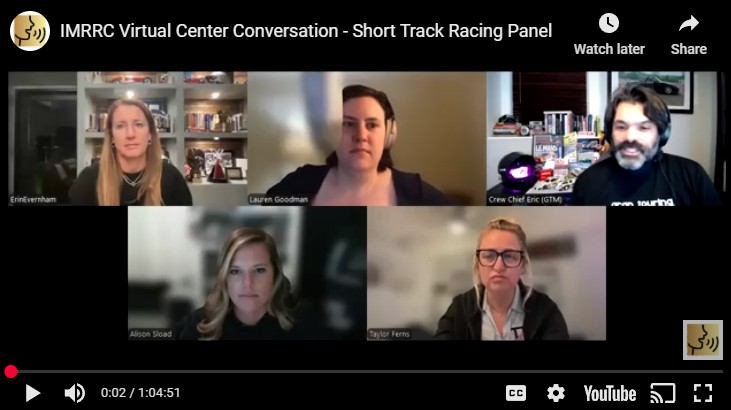
All of our BEHIND THE SCENES (BTS) Break/Fix episodes are raw and unedited, and expressly shared with the permission and consent of our guests.
Super-modifieds a special variant of Short Track Racing
The Oswego Speedway, located in Oswego New York, was built in 1951 when original owners Harry, George and William Caruso converted the one time Wine Creek Horse Track into a 3/8 mile dirt auto racing facility. The track was paved during 1952 and remained a 3/8 mile track until 1961 when it was enlarged to its current 5/8 mile size. The Oswego Speedway has been a continuously run weekly race track since it opened in August of 1951.
Tune in everywhere you stream, download or listen!
 |  |  |
Support Women in Motorsports North America
The following episode is brought to you in part by Women in Motorsports North America, a community of professional women and men devoted to supporting opportunities for women across all disciplines of motorsport by creating an inclusive, resourceful environment to foster mentorship, advocacy, education, and growth, thereby ensuring the continued strength and successful future of our sport.
Women in Motorsports North America is a not-for-profit organization that began in 2022. Known as “WMNA,” it is a community that focuses on Advancing, Connecting, and Enabling with its many partners, including industry executives, drivers, team members, OEM sponsors, racetracks, and more. Learn from co-founder Lyn St. James about how and why WIMNA got started by tuning in below.
Tune in everywhere you stream, download or listen!
 |  |  |
The Women with Drive summit continues its mission to bring together motorsports professionals. This unique event offers new pathways for individuals to explore career opportunities, discuss current industry challenges, and provides mentorship and resources for future growth in the industry.
If you’d like to stay informed about WIMNA and the Women with Drive Summit, be sure to log on to www.womeninmotorsportsna.com or follow them on social media @womeninmotorsportsna on Instagram and Facebook.



